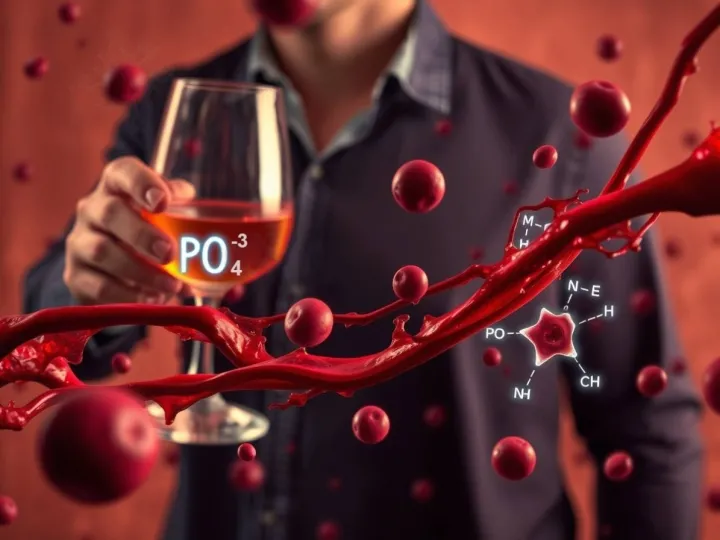A team of researchers examined how long delta-9-tetrahydrocannabinol (THC) remains detectable in the bloodstream of regular cannabis users and whether elevated levels are linked to impaired driving. The study, published in Clinical Chemistry (ADLM Journals, Open Access), provides evidence that per se and zero-tolerance THC laws in several U.S. states may not correspond to actual impairment.
The investigation involved 190 adults who reported regular cannabis use, defined as four or more times in the past month. All participants were instructed to abstain from cannabis for at least 48 hours before testing. Blood samples were collected to determine baseline THC concentrations, and participants completed a 25-minute driving simulation measuring lane control, speed variation, car-following accuracy, and divided-attention performance.
Using isotope dilution liquid chromatography coupled with tandem mass spectrometry (LC-MS/MS), the researchers found that THC remained measurable in the blood of many participants even after two days of abstinence. Forty-three percent exceeded the zero-tolerance threshold of 0.5 ng/mL, while 24 percent surpassed 2 ng/mL and 5.3 percent exceeded 5 ng/mL - the cutpoints commonly used in per se legislation to indicate driving under the influence.
Despite these elevated THC levels, there was no statistical difference in simulated driving performance between those above or below these thresholds. The composite drive scores for participants exceeding the 0.5, 2, or 5 ng/mL limits were indistinguishable from those of individuals with undetectable THC levels. This suggests that measurable THC concentration does not necessarily correlate with impaired driving ability, at least among regular users who have abstained for several days.
The researchers also assessed how THC levels changed following cannabis use during the experiment. Participants smoked either active cannabis containing 5.9% or 13.4% THC or a placebo. Six hours after smoking active cannabis, the median increase in blood THC compared with baseline was just 0.5 ng/mL - a statistically significant but small change. In contrast, the placebo group showed no change at all, confirming that baseline THC levels remained stable in the absence of new exposure.
One participant exhibited an unusually high baseline THC concentration of 16.2 ng/mL despite reporting no use for two and a half days. Her post-smoking THC peaked at 135 ng/mL and returned to nearly the same level - 16.5 ng/mL - five hours later. Analysis of her metabolite profile indicated that these levels likely reflected steady-state accumulation rather than recent use.
These findings highlight the complex pharmacokinetics of THC. Unlike alcohol, which clears from the body within 24 to 48 hours, THC and its metabolites can persist for days or even weeks, particularly in chronic users. Fat-soluble cannabinoids are stored in body tissues and released gradually, creating low but detectable blood concentrations long after any psychoactive effects have worn off.
The implications are significant for forensic and legal settings. Six U.S. states enforce per se THC limits, and twelve others maintain zero-tolerance laws. These statutes treat blood THC concentrations above certain thresholds as automatic evidence of impairment - without requiring behavioral proof. Yet the current study, along with previous research, indicates that such thresholds are arbitrary and unsupported by consistent scientific evidence.
Past work by Lacey and colleagues involving 3,000 motor vehicle crashes found that detectable THC did not increase crash risk once confounding factors were controlled, while alcohol intoxication produced a clear, dose-dependent increase in fatal crashes. Similarly, epidemiological data suggest that the relative risk of collision associated with cannabis use (odds ratio ~1.3) is modest compared with that of alcohol (odds ratio ~13 for a blood alcohol concentration of 0.08%).
The authors note that although cannabis can impair attention and coordination shortly after use - typically within a three- to five-hour window for inhaled THC - the persistence of measurable THC well beyond this period complicates enforcement. Their results show that up to half of regular users would be at risk of legal consequences even when not impaired.
In their discussion, the researchers emphasize the need for more nuanced approaches to detecting impairment. Field sobriety tests and behavioral evaluations may offer better indicators of driver safety than static blood THC concentrations. The team recommends collaboration between law enforcement and scientific communities to develop standardized, evidence-based assessments that can distinguish recent use from residual presence.
From the perspective of Seven Reflections' Dimensional Systems Architecture (DSA) framework, this study illustrates a broader principle about how systems retain state information beyond active influence. In DSA terms, the human body's biochemical field exhibits a form of residual coherence - maintaining traces of prior states that no longer exert active function but remain detectable within the structure. This distinction between active resonance (impairment) and latent presence (residual field) mirrors how cognitive systems store inactive information: what remains measurable is not necessarily what remains causative. The misunderstanding of such residual states often leads to structural misclassification - whether in biological systems or in societal laws built upon them.
From a systems-logic standpoint, THC pharmacokinetics demonstrate how persistence within a field (the body's metabolic system) can be mistaken for ongoing influence. The lesson extends beyond cannabis policy: it cautions against conflating the measurable with the meaningful, or assuming that presence equals activity. True regulation - whether biological or social - must account for both dynamic function and field retention, recognizing that coherence and causation do not always coincide.






